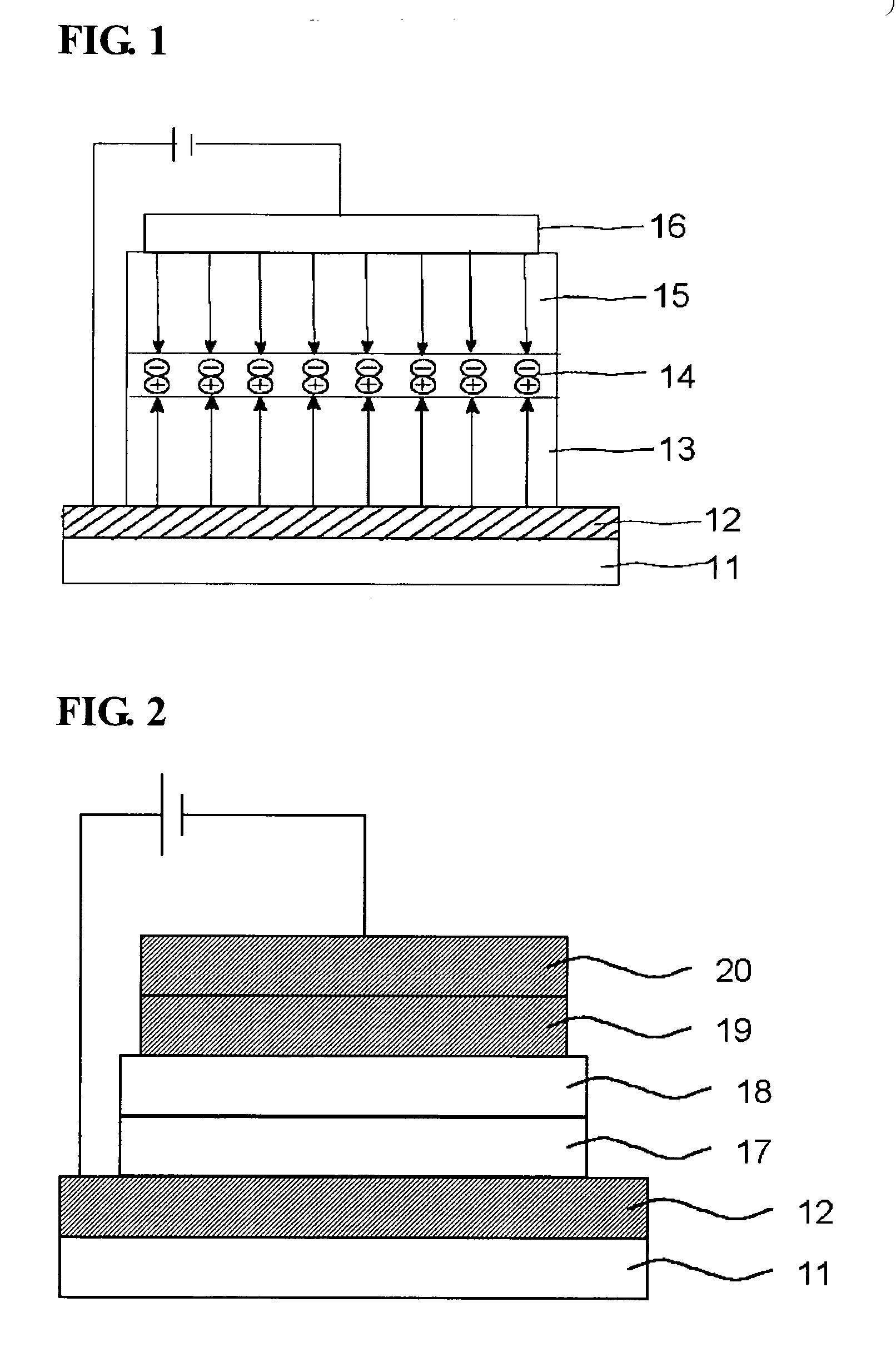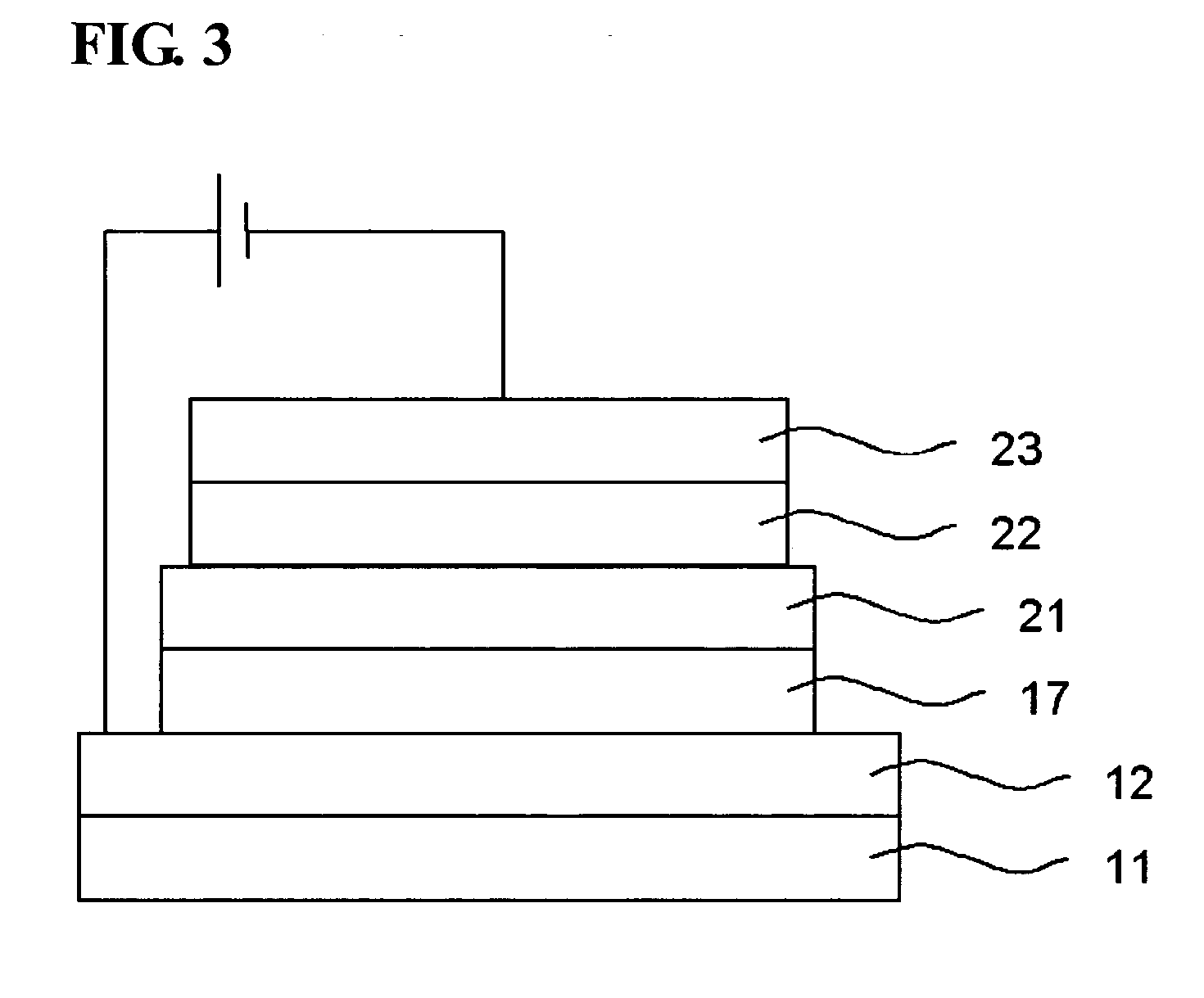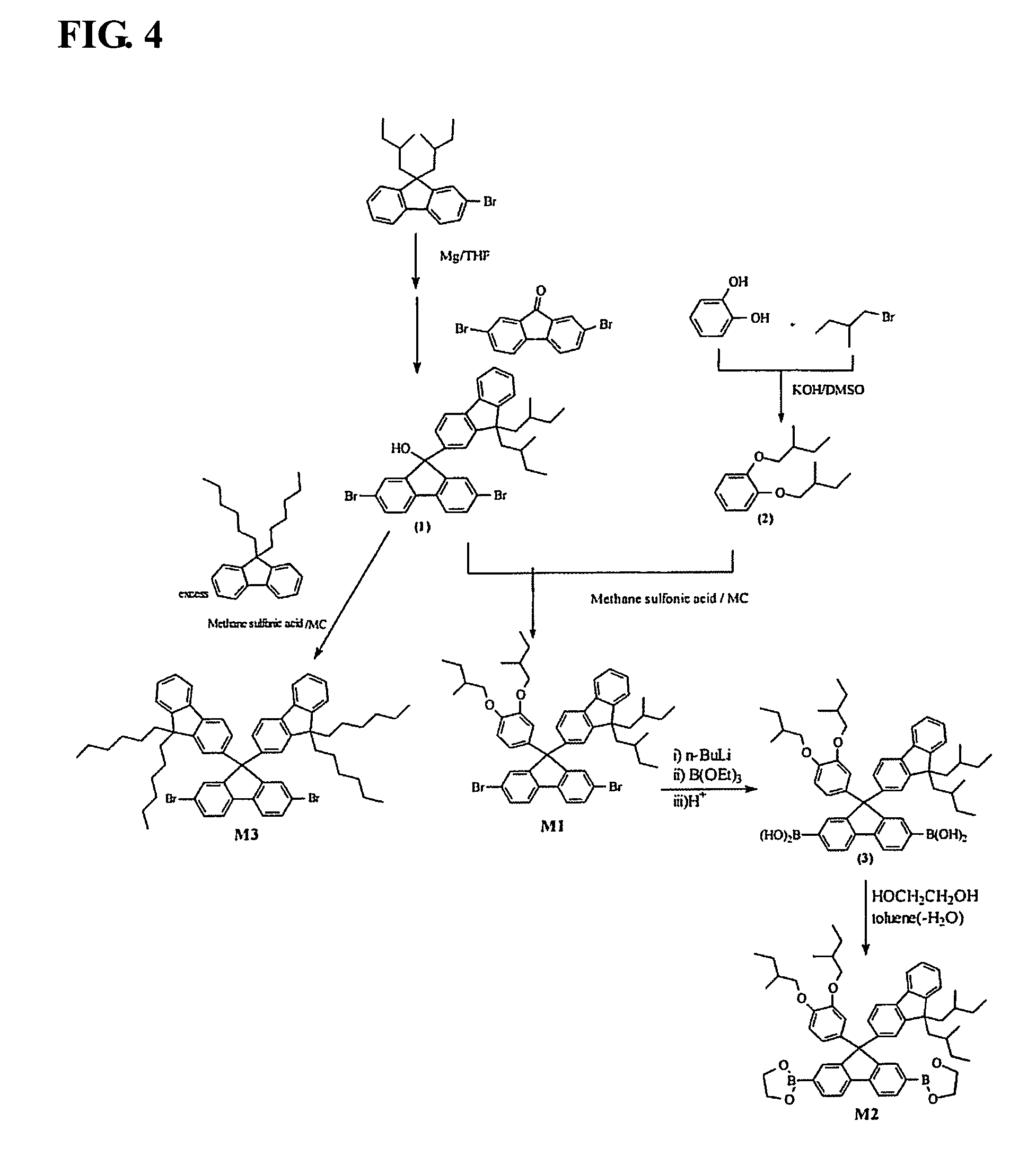Electroluminescent polymer having 9-fluoren-2-yl-2,7-fluorenyl unit and electroluminescent device using same
a technology of electroluminescent devices and polymers, which is applied in the direction of discharge tube luminescnet screens, natural mineral layered products, etc., can solve the problems of poor processability and thermal stability, reduced light-emitting efficiency or lifespan, and conduct inkjet printing or spin coating, etc., to minimize the interaction between molecules, excellent glass transition temperature and thermal stability, and excellent light-emitting efficiency and solubility
- Summary
- Abstract
- Description
- Claims
- Application Information
AI Technical Summary
Benefits of technology
Problems solved by technology
Method used
Image
Examples
preparation example 1
Synthesis of (9-(9,9-di(2-methyl)buylfluoren-2-yl)-2,7-dibromofluorene-9-ol) (1)
[0111] 3.3 g (137 mmol) of Mg was put into a 500 mL three-neck flask, and 44 g (114 mmol) of 9,9-di(2-methyl)butyl-2-bromofluorene which was melted in 200 mL of THF was then slowly dropped thereonto to produce a Grignard reagent. After the temperature of a reaction vessel was reduced to −40° C. or less, 30 g (91 mmol) of 2,7-dibromofluorene was added thereto in a nitrogen atmosphere, the temperature was slowly increased to normal temperature, and agitation was conducted for 10 hours. Reactants were poured into water, extraction was conducted using diethyl ether, and the solvent was removed using a rotary evaporator. Separation was conducted using a column chromatography method to produce 43 g (67 mmol, 73%) of 9-(9,9-di(2-methyl)butylfluoren-2-yl)-2,7 -dibromofluorene-9-ol (1).
preparation example 2
Synthesis of 1,2-di(2-methyl)butyloxybenzene (2)
[0112] 20 g (91 mmol) of catechol compound and 107 g (436 mmol) of 2-methylbutyl p-toluenesulfonate were dissolved in 200 mL of DMSO in a 500 mL round flask, 53 g equivalents (473 mmol) of potassium tertiary butoxide (t-BuOK) was slowly added thereto, and a reaction was conducted at 70° C. for 12 hours. Reactants were poured into 500 mL of water, extraction was conducted using methylene chloride, the solvent was removed using a rotary evaporator, and separation was conducted through a column chromatography method using a mixed solvent of hexane and ethyl acetate to produce 37 g (148 mmol, 81%) of 1,2-di(2-methyl)butyloxybenzene (2).
preparation example 3
Synthesis of a Monomer M1
[0113] 50 g (78 mmol) of compound (1) produced in preparation example 1 and 23.3 g (93 mmol) of compound (2) produced in preparation example 2 were dissolved in 1000 mL of dichloromethane in a 2 L round flask, the temperature was reduced to 0° C., a solution in which 7.5 g (78 mmol) of methane sulfonic acid was dissolved in 100 mL of dichloromethane while agitating was slowly added thereto, and agitation was conducted for 2 hours. Reactants were poured into water, extraction was conducted using diethyl ether, and the solvent was removed using a rotary evaporator. Separation was conducted using a column chromatography method to produce 67 g (65 mmol, 84%) of 2,7-dibromo-9-(9,9-di(2-methylbutyl)fluoren-2-yl)-9-(3,4-di(2-methyl)butyloxyphenyl)fluorene (M1).
PUM
| Property | Measurement | Unit |
|---|---|---|
| Volume | aaaaa | aaaaa |
| Volume | aaaaa | aaaaa |
| Substance count | aaaaa | aaaaa |
Abstract
Description
Claims
Application Information
 Login to View More
Login to View More - R&D
- Intellectual Property
- Life Sciences
- Materials
- Tech Scout
- Unparalleled Data Quality
- Higher Quality Content
- 60% Fewer Hallucinations
Browse by: Latest US Patents, China's latest patents, Technical Efficacy Thesaurus, Application Domain, Technology Topic, Popular Technical Reports.
© 2025 PatSnap. All rights reserved.Legal|Privacy policy|Modern Slavery Act Transparency Statement|Sitemap|About US| Contact US: help@patsnap.com



